Arun Agrawal remembers only one toy from his childhood in 1960s Bihar, India: a little wooden cart with a tiny leather-and-stone drum that made a tuck-tuck noise when he pulled it around on a string. “I never felt I lacked for anything,” he says. “But when I became a teenager, I realized that we didn’t have a television, we never went out for meals. We lived a lifestyle that was…” — he pauses to search for the right phrase — “… less materially full than many of my friends that I met in school and then in college.”
Things have changed — for Arun, India and the world. The relative simplicity of Arun’s middle-income childhood was a product of both India’s strict trade controls and a familial attitude of making do with less. But India’s economy opened up in the 1980s and 1990s; its skyrocketing population gained wealth and ever more stuff.
Arun grew up, got a TV, became a researcher, moved to the United States. Emissions of CO2 climbed; the world grew warmer. Climate change emerged as the globe’s most pressing environmental issue.
Arun, a trained political scientist who studies sustainability and development at the University of Michigan, has seen a six-decade arc of humanity grappling with climate change. In 1962, when he was born, environmentalism was hot but “climate change” wasn’t. In 1992, when he turned 30, he received his PhD, and the ink dried on the United Nation’s Framework Convention on Climate Change. In 2022, he watches with pride as his daughter, Naina Agrawal-Hardin, takes up the reins of climate change activism, and with sadness that her generation must do it.
Arun’s life is one of contrasts, equally split on both sides of the UNFCCC: He has seen precisely 30 years of climate awakening, then 30 years of climate struggle. He was born and raised in India, and now lives in the United States. He has studied the environment in collaboration with both natural and social scientists. His life is a window into how the world has changed and how it may change again.
Looking back, the story of climate change seems both longer and shorter than sense might dictate. The idea that burning fossil fuels could warm the world like a greenhouse was first introduced in the 1890s. It took a century for people to wake up to the idea that this might be a serious problem. Then change accelerated: Public perceptions and the physical world both were altered dramatically in the decades after the 1990s. Yet little has so far been done to “bend the curve” of global greenhouse gas emissions.
“We have the information, we have the resources, we have the understanding, but we don’t have the political alignment,” Arun says. “And if we don’t get the political alignment, it will never happen.”
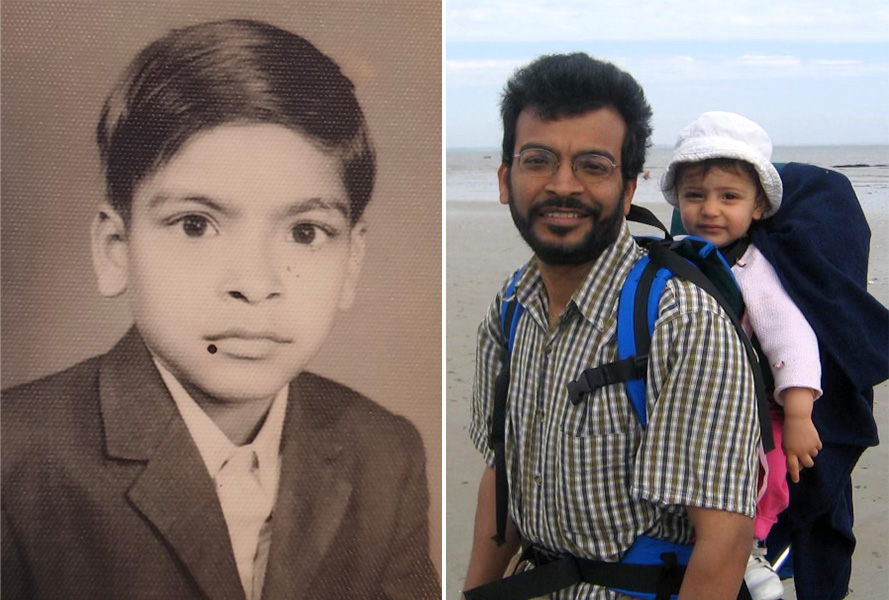
The world of Arun’s childhood in India and that of his daughter, Naina, raised decades later in the United States, are starkly different.
CREDIT: COURTESY OF AMITABH AGRAWAL
Climate prequel (1960s-1980s)
In 1962, the book Silent Spring was published in the United States, documenting the appalling impact of DDT on birds’ eggs. Hot topics in the environmental movement were pollution, wilderness protection and the hovering fear of nuclear war. The global population was 3 billion and exploding.
Climate change wasn’t on the agenda. Measurements taken from the Antarctic and atop a Hawaiian volcano were just starting to show hints of a possible rise in atmospheric carbon dioxide.
In the state of Bihar, even weather wasn’t really on the agenda; it certainly wasn’t a topic of conversation that Arun recalls from his childhood. “India’s climate is very predictable. In the summer it is hot. In the monsoons, it rains,” he says. “Coming to the US was a big change, because everyone talks about the weather all the time.”
He and his four siblings grew up in a middle-class home in a rural town, his father a small-business owner, his mother a homemaker. They had no appliances, no fridge, but they did have a half-acre in the backyard and a home riotously full of cousins. Arun spent his days climbing trees to pick mangoes and lychees. His first classes, he remembers, were held under a tree. He eventually moved to live with his aunt in Patna, the capital of Bihar, to access a better school.
In 1972, when the United Nations met in Stockholm for the world’s first major conference focusing on the environment, Arun, 10, was busy playing cricket in the streets. India’s prime minister, Indira Gandhi, made waves at that meeting by spotlighting the need for both conservation and economic development for the world’s poor — factors sometimes perceived as being at odds with each other. A handful of scientists were beginning to sound the alarm about burning fossil fuels and about planetary temperature, since carbon dioxide was now distinctly rising. Others were more worried about global cooling.
In high school, Arun began to become aware of the critical importance of the weather for people’s lives. “I realized that India’s economy was very reliant on agriculture, and a failure of the monsoon meant a huge blow to literally hundreds of millions of people,” he says. In 1979-1980, as he was graduating from high school, India experienced its worst drought of the century, with catastrophic results for livestock. He would remember this later, when climate change began to threaten the monsoons.
He moved on to study history and business; his classes were disappointingly full of discussions about the ideal qualities of products like shampoo. He worked for a biscuit manufacturer in Mumbai; it sent him door-knocking to assess demand for fruitcake. “They were so convinced about the importance of the work they were doing,” Arun says; he was mystified. Shifting to political science, he visited dozens of nonprofit groups aiming to improve lives across rural India and became fascinated by the use of common resources — water, clean air, forests.
That brought him across the ocean to Duke University in North Carolina in 1986, to take up a PhD in political science. It was his first time out of India, and the material culture of America in the 1980s was striking to him. Arun was against the idea of getting a car, a credit card, even a bank account. He shared an apartment with another student and removed the bed from his room so he could sleep, more familiarly, on a thin mattress on the floor.
Two years later, the UN Environment Program and its partners would launch the now famous Intergovernmental Panel on Climate Change, or IPCC. Their task: to assess all the science and come to a consensus on whether people were causing climate change, and what the future might hold.
Climate crunch (1988-1998)
For his PhD, Arun followed Indian shepherds in the Himalayas, walking a dozen miles a day and sleeping on the hard ground. He was studying how communities in the region managed their resource commons — which include traditionally shared land — specifically, what led them to be successful, when they failed, and how the government could help. The shepherds, he learned, were being driven away from pastures because landowners were taking over the commons and fencing them off, under the pretext of grassland repair. Arun saw how environmental slogans could be used to marginalize and deprive those already deprived.
His PhD advisor recommended that he read the book Bad Year Economics, a collection of essays by archaeologists and historians on how societies of the past had dealt with environmental stresses such as civilization-ending droughts. Humanity had thousands of years of experience coping with environmental change and many lessons to turn to on building resilience and survival during hard times, even if the modern causes and extent of climate change were new.
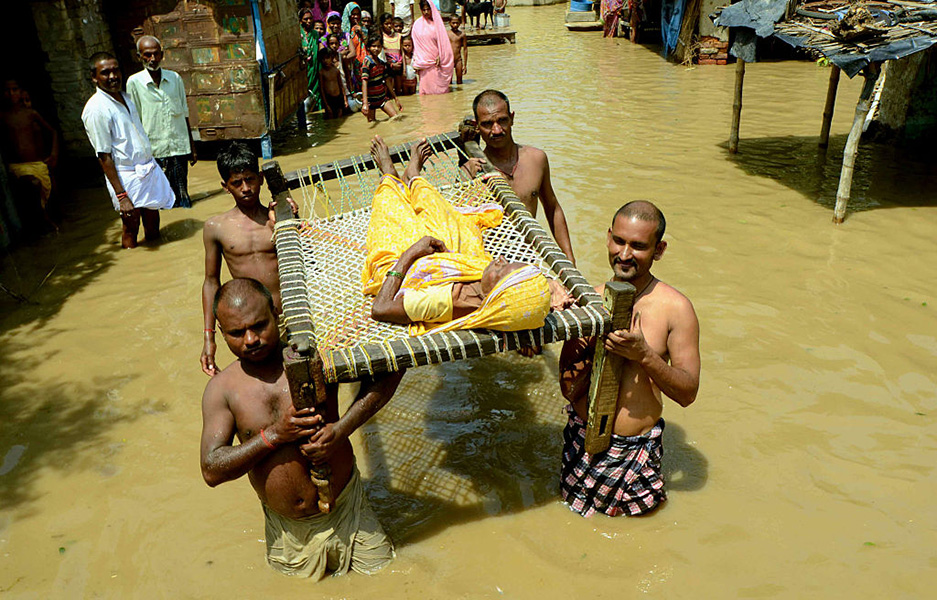
Flooding in Bihar, India, in 2016 hammered home the impacts of climate change for Naina Agrawal-Hardin.
CREDIT: XINHUA NEWS AGENCY / GETTY IMAGES
In 1990, for the first time since measurements began, the average global air temperature exceeded 0.4 degrees Celsius above the benchmark that scientists use to measure global warming — the 1951-1980 average of around 14 degrees Celsius. An assessment of national contributions to greenhouse gas emissions by the World Resources Institute showed developing nations like India and China pumping out vast pollution. The finger-pointing made no sense to Arun as he walked to his classes at Duke. “The crazy thing was, their analysis didn’t take into account any historical emissions,” he says.
Many academics, including the India-based Centre for Science and Environment, put out counter-reports showing how the cumulative CO2 emissions from developed nations over earlier decades swamped those of developing ones, a fact that the analysts in Washington, DC, had disregarded. “I remember this being just this huge topic of discussion,” Arun says, “how easy it is, even when you’re doing really careful analysis with numbers, to ignore basic patterns if you are not sensitive to issues of injustice.”
Arun remembers his time in graduate school as a succession of long, intense discussions with friends about poverty and the impacts of capitalism. He felt out of place among his political science colleagues who were baffled by his interest in the environment. Instead, he hashed things through with students of literary criticism or anthropology in coffee shops and living rooms.
The scope of the problem of climate change was becoming ever more apparent. The first IPCC report, released in 1990, concluded that yes, people were substantially increasing greenhouse gases in the air. Even back then, scientists knew that a doubling of CO2 would warm the globe by 1.5 to 4.5 degrees Celsius.
In 1992, Arun walked across the university stage in cap and gown. That summer, politicians from almost 180 nations met in Rio de Janeiro for the Earth Summit, and the United Nations Framework Convention on Climate Change — the UNFCCC — was formed to tackle the alarming rise in greenhouse gases.
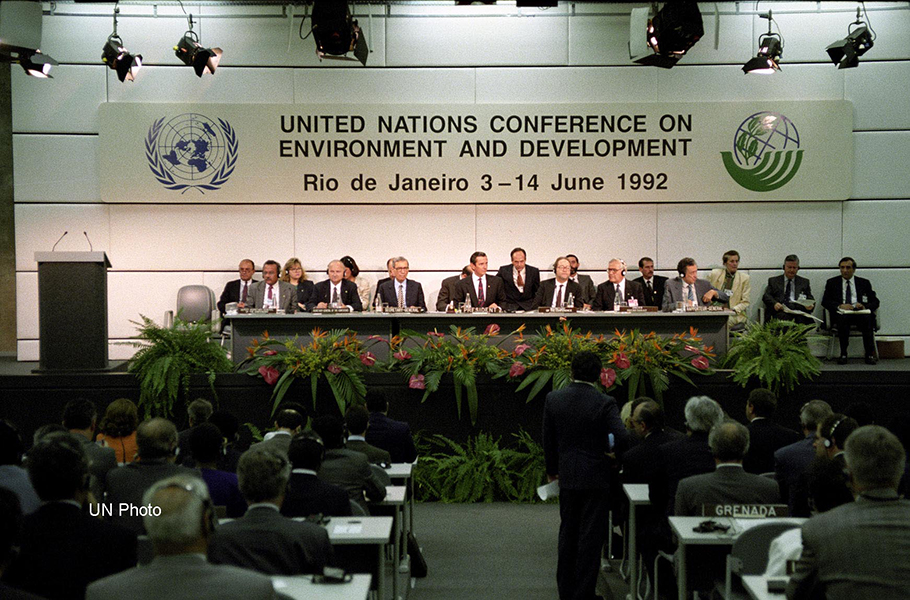
The 1992 Earth Summit in Rio de Janeiro was the birthplace of the United Nations Framework Convention on Climate Change.
CREDIT: MICHOS TZOVARAS / UN PHOTO
Arun was traveling in the US and India and applying for postdoctoral positions. The Indian papers, he remembers, were plastered with news about the summit, mostly critical of the West. Their emphasis was that environmental concerns, though important, needed to be balanced against the needs of the poor.
In 1997, the Kyoto Protocol was signed with the first firm United Nations commitments to reduce greenhouse gas emissions. There were intense debates about how to fairly apportion responsibility between nations. “I remember feeling more uncertainty than anxiety,” says Arun. It wasn’t clear to him how much, or how quickly, climate change would start to affect the world; he wouldn’t begin writing on it himself for another eight years or so — about as long as it would take for the protocol to be ratified and enter into force.
Meanwhile, the planet was reacting to the new glut of greenhouse gases in its atmosphere. In 1998, the first mass bleaching event of corals swept the globe, fueled by an El Nino weather event on top of global warming; about 8 percent of the planet’s corals crashed. In 1999, the Earth hosted 6 billion people, double the population when Arun was born.
Arun’s career took him to the University of Michigan. Along the way, he met an American girl who grew up in Tennessee — anthropologist Rebecca Hardin, who was also focused on issues of sustainability and conservation. They bonded over science; then they married.
Climate crisis (2000s)
In 2003, Arun and Rebecca’s daughter, Naina, was born; that summer, Europe was gripped by a deadly heat wave, and scientists were, for the first time, able to quantitatively blame climate change for having made it more likely. The field of attribution science was born, helping to prove to the skeptics that natural disasters were getting worse and more frequent.
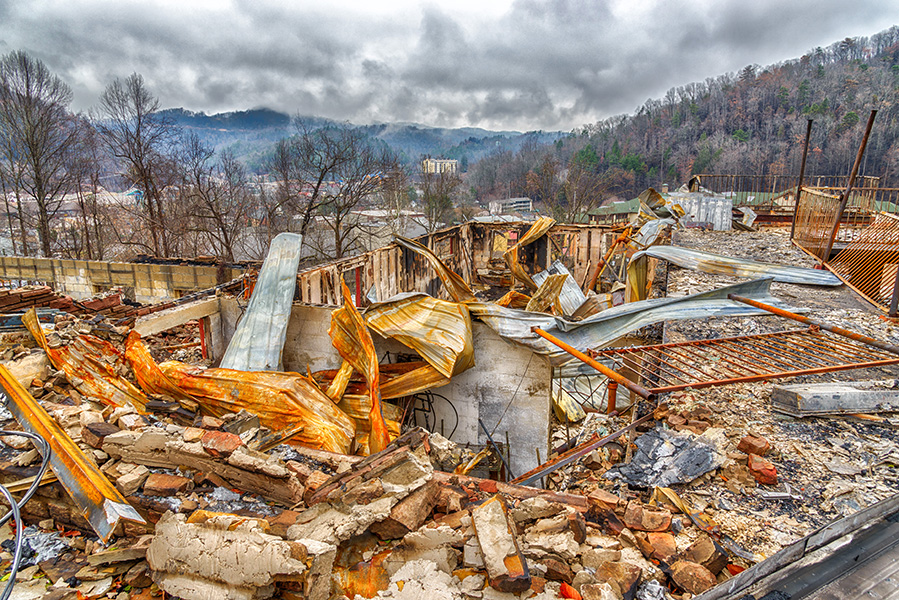
Devastating fires hit the Gatlinburg, Tennessee, area in 2016.
CREDIT: ISTOCK.COM / WENDELL AND CAROLYN
In 2006, an influential economic analysis showed that while the cost of acting against climate change was high, the cost of inaction was greater. Climate change became a serious issue not just for environmentalists worried about the welfare of polar bears, but also for CEOs worried about their annual bonuses.
At work, Arun rose to be a full professor in 2008. The world kept warming and the science on climate change tightened: IPCC reports published in 2001, 2007 and 2014 strengthened their language on the severity and certainty of the impacts of climate change. Nations largely met their obligations under the Kyoto Protocol but these proved to be woefully inadequate. Global emissions increased by nearly 50 percent from 1990 to 2010; along the way, the planet lost some 40 million hectares of trees.
As his daughter grew up, Arun was struck by how his mother-in-law showered Naina with material gifts. This act of care was unfamiliar to him and his one-toy childhood. Naina overheard conversations about deforestation at the dinner table, then went to preschool and collapsed in tears when she saw all the wooden blocks in the playroom. Her parents comforted her.
She grew up with composting and recycling, a vegetable garden in the yard, the heat turned on low and everyone wearing an extra sweater. “Saving water and turning off the lights: We did all those things,” Naina says. But later, she wondered: Could America build towns where you don’t need to drive to the grocery store? Where suburban homes don’t have lawns? Where Christmas isn’t a celebration of material abundance?
In 2012, the IPCC put out a special report on extreme weather: Compared to 1950, they could now carefully say, there are “very likely” more hot days and nights, fewer cold ones, and “likely” more heavy rainfall.
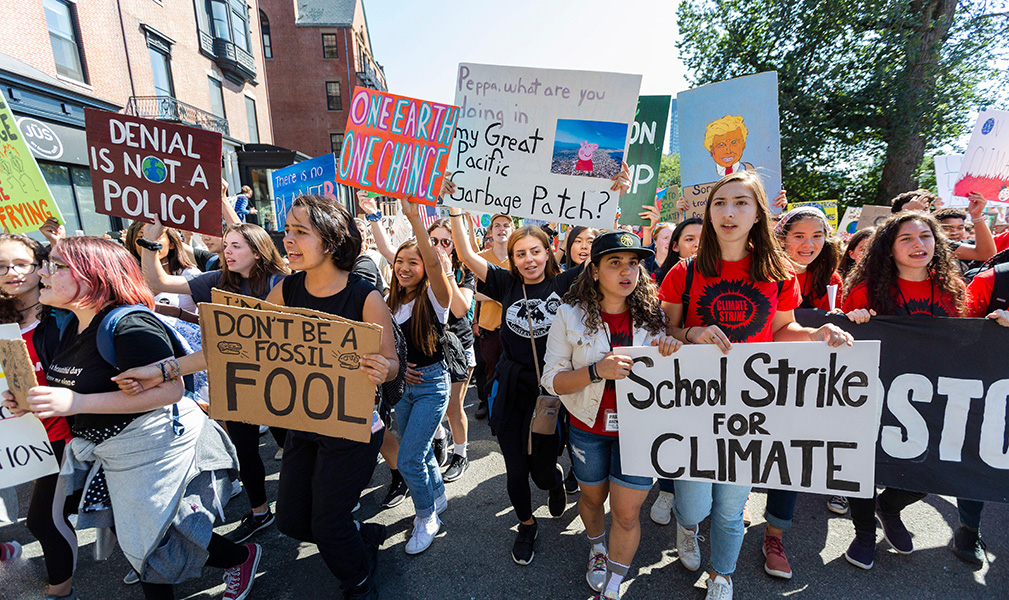
School strikes for the climate, such as this one held in Boston, swept the globe in 2019.
CREDIT: MARILYN HUMPHRIES / ALAMY STOCK PHOTO
In 2015, when Naina was 12, global annual plastic production was nearly 35 times what it was when her father was born. More than a metric ton of plastic had been made for each of the 7-plus billion people then on the planet. There were more than a billion cars on the road, up from maybe 100 million in 1960.
At the 21st meeting of the UNFCCC, the Paris Agreement was forged, with hope for tighter restrictions on emissions. The Paris deal hoped to have better compliance, having abandoned the idea of a grand authority apportioning responsibilities; each country decided for itself what it would do.
Wind and solar energy boomed, but so did global demand; renewables rose slowly and steadily to reach a quarter of global electricity generation, but electricity generation was booming. Warming topped 0.8 degrees Celsius.
In the Agrawal-Hardin household, the dinner table hosted academic conversations about watershed management and sustainable technology development in Africa. Naina’s mind filled up with her parents’ knowledge, but her heart was on its own trajectory. “My parents were really good about letting me come to care about these issues on my own,” she remembers. “They helped me feel hopeful and empowered, rather than fatalistic or silly for how much I cared.”
2016 was hot: The world hit over 1 degree Celsius of warming for the first time. Now 13, Naina donned rubber gloves and stormed her school cafeteria, pulling plastic bottles out of the trash to put them in the recycling. “I wanted to make a point,” she says. Then weather disasters got personal: The devastating Gatlinburg fires hit Tennessee, where her grandparents had a cabin; severe floods hit Bihar, her father’s birthplace. The scale of needed action exploded in her head.
Naina’s first big move was to co-organize her own school’s participation in the famous March 2019 School Strike for Climate, inspired by Greta Thunberg. After that, she joined the Sunrise Movement, an American-based youth climate activism group centered on the Green New Deal, and became a spokesperson for change. Still a teenager, she traveled alone to DC and across the US, learning how to organize activism and speaking to the press. She learned to talk about the crisis, Arun says, not with despair or anger, but with a measured tone of optimism.
By 2020, international progress on tackling climate change was insufficient and uneven. The world’s nearly 8 billion people had emitted more CO2 in 30 years than in all of previous human history; emissions that year were 60 percent higher than they were in 1990. There was some good news: Solar and wind power were now cheaper than coal or gas.
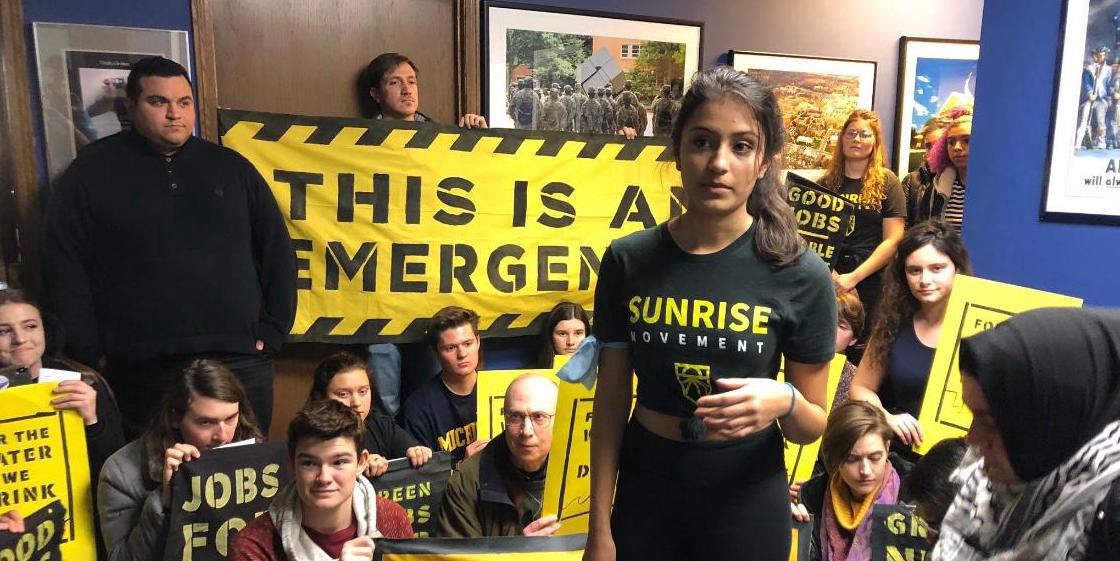
Naina Agrawal-Hardin, front, joined the Sunrise Movement to help coordinate social change.
CREDIT: COURTESY OF NAINA AGRAWAL-HARDIN
Climate crossroads: What next?
Arun looks back on his career so far with both satisfaction and a realization that it hasn’t been enough. His science has been solid and high-profile. He has published case studies of how Indigenous peoples can better defend their land and forests; he has helped to map out areas ripe for forest restoration and highlighted the kinds of restoration that would benefit both conservation and sustainable development. “I’ve done more than I thought was possible when I was 20 years old,” he says. “But when I think of what I have done, and what needs to be done, I feel like I’ve done nothing.”
All the good science in the world — including six assessments now by the IPCC, the latest released in 2021-2022 — hasn’t translated into enough political action, he says. “We need far more action than we need science.” He looks at Naina, now in her first year of university at Yale, and sees just how much can get done in a short time with enough focus and dedication. “Young folks like her have to invest in this process to create a different future,” he says. “We have failed to do it.”
This January, Arun was declared one of three cochairs for a massive review of “transformative change” for a group that serves as the biodiversity equivalent of the IPCC. They will be trying to work out how to completely reinvent social systems in ways that can serve both people and the planet indefinitely. The Annual Review of Environment and Resources, for which he serves on the editorial committee, is aiming to work more directly with advocates and youth, to make its reviews of even greater practical use in the fight against climate change.
Naina says it is hard to be buffeted by the problems spurred by the pandemic and climate change and know with certainty that more will keep rolling in. “We just have to live with it, repeatedly confronted with that kind of tragedy.”
She says that she and her friends wonder about the long-term effects of Covid-19; they quip it might be OK if they all drop dead by 2050 since that’s when the planet will be unlivable anyway. “That’s a joke,” she says. “But I do think our whole generation has grown up learning to be cavalier about the destruction of everything we know and love. I don’t know if we take enough time to recognize how traumatic that is.”
While Naina still sees a window of opportunity to curb emissions and mitigate disaster, she also feels that a focus now has to be on accepting the climate change already underway and working on adaptation — on breaking down barriers so that people of different economic standings and beliefs can work together on issues like immigration, food and water supply. She hasn’t declared a college major, but says she plans to direct her career toward forging productive social movements.
At least the world has moved on from merely trying to convince people that climate change is even a problem: “That’s not negotiable,” she says. The only real question: “What are we doing about it?”
That will be a big job, for Arun and his daughter — and for everyone to come in the next 60 years.
Six decades have seen the world warm by about 1 degree Celsius, with international efforts to curb greenhouse gas emissions starting in the 1990s.




